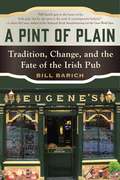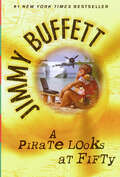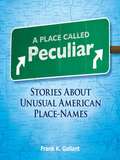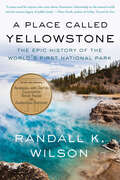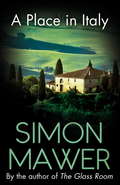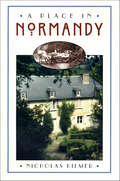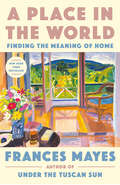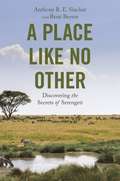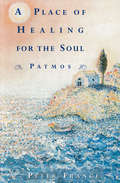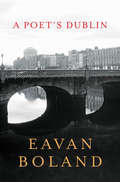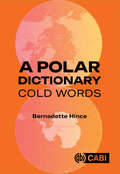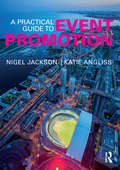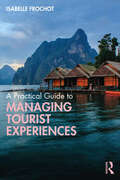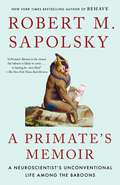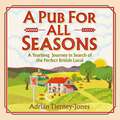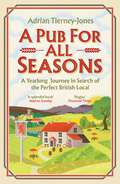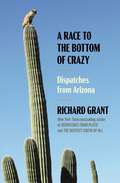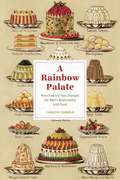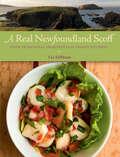- Table View
- List View
A Pint of Plain: Tradition, Change, and the Fate of the Irish Pub
by Bill BarichAfter meeting an Irishwoman in London and moving to Dublin, Bill Barich?a “blow-in,” or stranger, in Irish parlance?found himself looking for a traditional Irish pub to be his local. There are nearly 12,000 pubs in Ireland, so he appeared to have plenty of choices. He wanted a pub like the one in John Ford's classic movie, The Quiet Man, offering talk and drink with no distractions, but such pubs are now scare as publicans increasingly rely on flat-screen televisions, rock music, even Texas Hold ‘Em to attract a dwindling clientele. For Barich, this signaled that something deeper was at play?an erosion of the essence of Ireland, perhaps without the Irish even being aware. A Pint of Plain is Barich's witty, deeply observant portrait of an Ireland vanishing before our eyes. While 85 percent of the Irish still stop by a pub at least once a month, strict drunk-driving laws have helped to kill business in rural areas. Even traditional Irish music, whose rich roots “connect the past to the present and close a circle,” is much less prominent in pub life. Ironically, while Irish pubs in the countryside are closing at the alarming rate of one per day, plastic IPC-type pubs are being born in foreign countries at the exact same rate. From the famed watering holes of Dublin to tiny village pubs, Barich introduces a colorful array of characters, and, ever pursuing craic, the ineffable Irish word for a good time, engages in an unvarnished yet affectionate discussion about what it means to be Irish today.
A Pirate Looks at Fifty
by Jimmy Buffett#1 NEW YORK TIMES BESTSELLER • Rock & Roll Hall of Fame inductee Jimmy Buffett offers his philosophy on life and how to live it, &“like sitting with Buffett at a beachside bar, listening to him spin tales&” (Time). &“Buffett took his family on a three-week trek around the Caribbean. . . . His colorful travelogue is interspersed with memoirs of his youth and music career—both of which revolve around his continuing search for the perfect fishing spot.&”—USA TodayFor Parrotheads, armchair adventurers, and anyone who appreciates a good yarn and a hearty laugh, here is the ultimate backstage pass. You&’ll read the kind of stories Jimmy usually reserves for his closest friends and you'll see a wonderful, wacky life through the eyes of the man who's lived it. Jimmy takes us from the legendary pirate coves of the Florida Keys to the ruins of ancient Cartegena. Along the way, we hear a tale or two of how he got his start in New Orleans, how he discovered his passion for flying planes, and how he almost died in a watery crash in Nantucket harbor. We follow Jimmy to jungle outposts in Costa Rica and on a meandering trip down the Amazon, through hair-raising negotiations with gun-toting customs officials and a three-year-old aspiring co-pilot. And he is the inimitable Jimmy Buffett through it all.
A Place Called Peculiar: Stories About Unusual American Place-Names
by Frank K. GallantFrom Bug Tussle, Alabama, to Donnybrook, New York, this pop-culture history offers a highly entertaining survey of America's most unusual place-names and their often-humorous origins. Frank K. Gallant traveled the country -- meeting locals, eating in their restaurants, staying at their hotels -- and recorded the best of the stories and legends he encountered. The only nationwide survey of its kind, this book features a state-by-state format for easy reference. It's also an irresistible browsing book for aficionados of American history, language, and culture.
A Place Called Ugly
by AviOwen's family stayed in their family summer home for the last twelve summers. But now that is at risk of being taken away as construction workers want to tear it down and build a hotel in the house's place,alone,a fourteen-year-old Owen is going to stay and save the place.
A Place Called Yellowstone: The Epic History of the World’s First National Park
by Randall K. WilsonWINNER OF THE BARBARA AND DAVID ZALAZNICK BOOK PRIZEFinalist for the High Plains International Book Award INSIDE YELLOWSTONE NATIONAL PARK: Discover the epic history of the first US national park in this historical adventure for fans of American history, the Wild West, and the hit show Explore how Yellowstone&’s remote Western landscape became a symbol of our country—and an integral part of our understanding of the natural world.It has been called Wonderland, America&’s Serengeti, the crown jewel of the National Park System, and America&’s best idea. But how did this faraway landscape evolve into one of the most recognizable places in the world? As the birthplace of the national park system, Yellowstone witnessed the first-ever attempt to protect wildlife, to restore endangered species, and to develop a new industry centered on nature tourism.Yellowstone remains a national icon, one of the few entities capable of bridging ideological divides in the United States. Yet the park&’s history is also filled with episodes of conflict and exclusion, setting precedents for Native American land dispossession, land rights disputes, and prolonged tensions between commercialism and environmental conservation. Yellowstone&’s legacies are both celebratory and problematic. A Place Called Yellowstone tells the comprehensive story of Yellowstone National Park as the story of the nation itself.
A Place in Italy
by Simon Mawer'You can't go and live there,' a despairing friend remarked, 'it's not even in Rome.' And it certainly wasn't, but still the author and his wife went to Avea, tucked away amongst the woods and gorges of the Lazio countryside.There they found no Colosseum, or Pantheon; there were no Ferraris racing around the Palazzi Navona, Venezia or Farnese. Instead they discovered the true agony and beauty of Italy: the instinctive warmth of the Avea villagers, the camorra, Little Tony - Italy's answer to Elvis - the elegant and sophisticated Colasanti family and a landlord like no other, Pippo, the self-styled Duca di Avea. This is not a story of the high culture of Italy's big cities, instead of how two foreigners learned to eat the Italian way, drive the Italian way, survive the Italian way - even to have a child the Italian way - and how in doing it they came to love this hidden corner of the most visited and least understood country in Europe.
A Place in Italy
by Simon Mawer'You can't go and live there,' a despairing friend remarked, 'it's not even in Rome.' And it certainly wasn't, but still the author and his wife went to Avea, tucked away amongst the woods and gorges of the Lazio countryside.There they found no Colosseum, or Pantheon; there were no Ferraris racing around the Palazzi Navona, Venezia or Farnese. Instead they discovered the true agony and beauty of Italy: the instinctive warmth of the Avea villagers, the camorra, Little Tony - Italy's answer to Elvis - the elegant and sophisticated Colasanti family and a landlord like no other, Pippo, the self-styled Duca di Avea. This is not a story of the high culture of Italy's big cities, instead of how two foreigners learned to eat the Italian way, drive the Italian way, survive the Italian way - even to have a child the Italian way - and how in doing it they came to love this hidden corner of the most visited and least understood country in Europe.
A Place in Normandy
by Nicholas KilmerIn 1920, Nicholas Kilmer's grandfather Frederick Frieseke, one of the preeminent American impressionists, purchased a farmhouse in Mesnil, a Norman town almost completely (to quote a local taxi driver) sunken away dans la nature. Until his death in 1939 he lived and painted there in the company of his wife and daughter.Long after the war that devastated Normandy, when Kilmer's grandmother's body was carried back from America to be buried alongside her husband in Mesnil, the family realized that they still owned the remnants of a large old Norman house standing amid many acres of orchard, woodland, and pasture. A Place in Normandy is a chronicle of renewed love and restoration, "subtly catching the rhythms of life and the flavor of an American family at ease in another culture" (Publishers Weekly).
A Place in the World: Finding the Meaning of Home
by Frances MayesA lyrical and evocative collection of personal stories from the #1 New York Times bestselling author of Under the Tuscan Sun, in which the queen of wanderlust reflects on the comforts of home.&“A soulful meditation on &‘what home means, how it hooks the past and pushes into the future&’ . . . spellbinding.&”—Publishers Weekly (starred review) Though Frances Mayes is known for her travels, she has always sought a sense of home wherever she goes. In this poetic testament to the power of place in our lives, Mayes reflects on the idea of home, from the earliest imprint of four walls to the startling discoveries of feeling the strange ease of homes abroad, friends&’ homes, and even momentary homes that spark desires for other lives. Her musings are all the more poignant after so many have spent their long pandemic months at home. From her travels across Italy—Tuscany, of course, but also Venice and Capri—to the American South, France, and Mexico, Mayes examines the connective tissue among them through the homes she&’s inhabited. A Place in the World explores Mayes&’s passion and obsessions with houses and the things that inhabit them—old books, rich food, beloved friends, transportive art. The indelible marks each refuge has left on her and how each home influenced the next serve as the foundations of its chapters. Written in Mayes&’s signature intimate style, A Place in the World captures the adventure of moving on while seeking comfort in the cornerstone closest to all of us—home.
A Place like No Other: Discovering the Secrets of Serengeti
by Anthony R. SinclairFrom famed zoologist Anthony Sinclair, an account of his decades-long quest to understand one of Earth's most spectacular ecosystemsWith its rich biodiversity, astounding wildlife, and breathtaking animal migrations, Serengeti is like no other ecosystem on the planet. A Place like No Other is Anthony Sinclair's firsthand account of how he and other scientists discovered the biological principles that regulate life in Serengeti and how they rule all of the natural world.When Sinclair first began studying this spectacular ecosystem in 1965, a host of questions confronted him. What environmental features make its annual migration possible? What determines the size of animal populations and the stunning diversity of species? What factors enable Serengeti to endure over time? In the five decades that followed, Sinclair and others sought answers. What they learned is that seven principles of regulation govern all natural processes in the Serengeti ecosystem. Sinclair shows how these principles can help us to understand and overcome the challenges facing Serengeti today, and how they can be used to repair damaged habitats throughout the world.Blending vivid storytelling with invaluable scientific insights from Sinclair's pioneering fieldwork in Africa, A Place like No Other reveals how Serengeti holds timely lessons for the restoration and conservation of our vital ecosystems.
A Place of Healing for the Soul: Patmos
by Peter FranceThe tiny, arid Greek island of Patmos is one of the most sacred places in the Christian world, and a place of bewitching power, where people come for a brief summer visit and end up returning, year after year, for the rest of their lives. In A Place of Healing for the Soul, BBC commentator Peter France - who arrived on the island a hardened skeptic - tells how he came to change his life perspective. Learning from the island's gregarious inhabitants and its religious eccentrics-hermits, ascetics, monks, and nuns - he discovered the pleasure and security of living simply and doing without, in a timeless realm where history, myth, and spirituality are endlessly alive.
A Place to Belong: A gripping, heartwrenching saga set in World War Two Ireland
by Cathy MansellSet against the glorious backdrop of World War Two Ireland, this dramatic, emotional and romantic novel is perfect for fans of Maeve Binchy, Lorna Cook, Tracy Rees and Jenny Ashcroft!'A romantic saga writer to watch' PETERBOROUGH TELEGRAPHShe lost everything in one night. Now she must fight for happiness.It's 1943 and Ireland has escaped the worst of the war raging in Europe, but life is not without its hardships. When fire breaks out at the convent in Cavan where she has spent the past ten years, orphan Eva Fallon barely escapes with her life.She's offered a bed for the night by Ma Scully, whilst her nephew Cathal, visiting from Dublin, helps battle the blaze. Seventeen-year-old Eva has never known such kindness but she's too proud to take advantage, and finds a job at Blackstock's farm, setting in motion a chain of events that will change her life forever.Amidst tragedy and hardship, the only ray of light is the friendship of Ma Scully and her growing, secret love for Cathal. And through it all Eva clings to her hope that one day she will find a place where she can truly belong.Don't miss Cathy Mansell's next powerfully heartrending family saga of three sisters in 1950s Ireland - The Dublin Girls - out now! Here's what readers are saying:'Glorious - a cross between Maeve Binchy and Catherine Cookson' 5* early reader review'A superb saga' PETERBOROUGH TELEGRAPH'A heart-warming story full of characters you'll come to love' ROSIE GOODWIN'Page-turning and compelling... Most highly recommended' MARGARET KAINE'Rarely have I read a book where every character springs from the pages so authentically' JEAN CHAPMAN'A warm-hearted, engaging story' MARGARET JAMES, WRITING MAGAZINE
A Place to Belong: A gripping, heartwrenching saga set in World War Two Ireland
by Cathy MansellSet against the glorious backdrop of World War Two Ireland, this dramatic, emotional and romantic novel is perfect for fans of Maeve Binchy, Lorna Cook, Tracy Rees and Jenny Ashcroft!'A romantic saga writer to watch' PETERBOROUGH TELEGRAPHShe lost everything in one night. Now she must fight for happiness.It's 1943 and Ireland has escaped the worst of the war raging in Europe, but life is not without its hardships. When fire breaks out at the convent in Cavan where she has spent the past ten years, orphan Eva Fallon barely escapes with her life.She's offered a bed for the night by Ma Scully, whilst her nephew Cathal, visiting from Dublin, helps battle the blaze. Seventeen-year-old Eva has never known such kindness but she's too proud to take advantage, and finds a job at Blackstock's farm, setting in motion a chain of events that will change her life forever.Amidst tragedy and hardship, the only ray of light is the friendship of Ma Scully and her growing, secret love for Cathal. And through it all Eva clings to her hope that one day she will find a place where she can truly belong.Don't miss Cathy Mansell's next powerfully heartrending family saga of three sisters in 1950s Ireland - The Dublin Girls - out now! Here's what readers are saying:'Glorious - a cross between Maeve Binchy and Catherine Cookson' 5* early reader review'A superb saga' PETERBOROUGH TELEGRAPH'A heart-warming story full of characters you'll come to love' ROSIE GOODWIN'Page-turning and compelling... Most highly recommended' MARGARET KAINE'Rarely have I read a book where every character springs from the pages so authentically' JEAN CHAPMAN'A warm-hearted, engaging story' MARGARET JAMES, WRITING MAGAZINE
A Place to Belong: A gripping, heartwrenching saga set in World War Two Ireland
by Cathy MansellShe lost everything in one night. Now she must fight for happiness.Dramatic, emotional and romantic, if you love Lorna Cook, Tracy Rees and Jenny Ashcroft, you'll love this gripping and heartwrenching novel from Cathy Mansell, set against the sweeping backdrop of Dublin and rural Ireland in the 1940s. It's 1943 and Ireland has escaped the worst of the war raging in Europe, but life is not without its hardships. When fire breaks out at the convent in Cavan where she has spent the past ten years, orphan Eva Fallon barely escapes with her life.She's offered a bed for the night by Ma Scully, whilst her nephew Cathal, visiting from Dublin, helps battle the blaze. Seventeen-year-old Eva has never known such kindness but she's too proud to take advantage, and finds a job at Blackstock's farm, setting in motion a chain of events that will change her life forever.Amidst tragedy and hardship, the only ray of light is the friendship of Ma Scully and her growing, secret love for Cathal. And through it all Eva clings to her hope that one day she will find a place where she can truly belong.(P) 2019 Headline Publishing Group Ltd
A Poet's Dublin
by Eavan BolandJuxtaposing verse and image, A Poet's Dublin is a study of origin and influence from "a major Irish poet" (Edward Hirsch). Written over years, the transcendent and moving poems in A Poet's Dublin seek out shadows and impressions of a powerful, historic city, studying how it forms and alters language, memory, and selfhood. The poems range from an evocation of the neighborhoods under the hills where the poet lived and raised her children to the inner-city bombing of 1974, and include such signature poems as "The Pomegranate," "The War Horse," and "Anna Liffey." Above all, these poems weave together the story of a self and a city--private, political, and bound by history. The poems are supported by photographs of the city at all times and in all seasons: from dawn on the river Liffey, which flows through Dublin, to twilight up in the Dublin foothills.
A Polar Dictionary: Cold Words
by Dr Bernadette HinceThis 'ice-breaking' book collects the English words of the Antarctic and the Arctic for the first time. These words relate to weather, ice and snow, auroras, clothes, food, housing, social structures, wildlife, plants, politics, as well as many other aspects of polar life. The terms are presented with scientific precision, a helpful interpretative commentary and moments of irresponsible whimsy. Apart from Antarctica and the Arctic, the regions covered here stretch to places as remote as the Faroe Islands, Iceland, Tristan da Cunha and the Falkland Islands.
A Practical Guide to Event Promotion
by Nigel Jackson Katie AnglissThis Practical Guide to Event Promotion offers the reader a short and succinct overview of the range of marketing communication materials from print to social marketing that can be used to promote an event successfully to the correct target markets. It includes invaluable advice on how to identify the type of communication tools most applicable to the type of event that is being promoted and its target market; how to effectively use and implement these; useful tips on things to avoid; as well as suggested time frames to use before, during and after the event. Examples of best practice and insights from events marketers are integrated throughout. Although full of practical information, a strong theoretical base underpins the advice included on how event managers can apply communication and persuasion theory to key audiences. This book will be a useful resource for Events Management students putting on an event as part of their course and for assessments, and those wanting to convert general theory into practical skills they will use in the workplace.
A Practical Guide to Managing Tourist Experiences
by Isabelle FrochotThis book provides students with a concise and practical guide that presents key understandings of the tourist experience and provides strategic guidance on how to develop an impactful and memorable experience. Chapters follow the path of the tourist journey, firstly exploring consumer behaviour, the decision-making process and the tourist’s need for escape, and providing insights into the strategic implications of consumer behaviour and the concept of immersion in tourism. Subsequent chapters look at the impact of experiences; consider trends in tourism experience such as wellness, sustainability, authenticity and fantasy; and provide experience design models. The final chapter offers a unique ten-step approach to designing impactful and memorable tourist experiences. Highly practical and engaging, this book is packed full of case studies and examples, from forest bathing in Finland to truffle hunting in Italy, as well as tools and exercises to guide the design process. This book offers students a full understanding of how the experience is lived from the tourist perspective, how tourism providers can manage that process and how to develop successful experimental marketing interventions. This is essential reading for all tourism students and future tourism managers.
A Primate's Memoir: A Neuroscientist's Unconventional Life Among the Baboons (Thorndike Press Large Print Adventure Ser.)
by Robert M. SapolskyIn the tradition of Jane Goodall and Dian Fossey, Robert Sapolsky, a foremost science writer and recipient of a MacArthur Genius Grant, tells the mesmerizing story of his twenty-one years in remote Kenya with a troop of savanna baboons."I had never planned to become a savanna baboon when I grew up; instead, I had always assumed I would become a mountain gorilla,&” writes Robert Sapolsky in this witty and riveting chronicle of a scientist&’s coming-of-age in Africa. An exhilarating account of Sapolsky&’s twenty-one-year study of a troop of rambunctious baboons in Kenya, A Primate&’s Memoir interweaves serious scientific observations with wry commentary about the challenges and pleasures of living in the wilds of the Serengeti—for man and beast alike. Over two decades, Sapolsky survives culinary atrocities, gunpoint encounters, and a surreal kidnapping, while witnessing the encroachment of the tourist mentality on Africa. As he conducts unprecedented physiological research on wild primates, he becomes enamored of his subjects—unique and compelling characters in their own right—and he returns to them summer after summer, until tragedy finally prevents him. By turns hilarious and poignant, A Primate&’s Memoir is a magnum opus from one of our foremost science writers.
A Pub For All Seasons: A Yearlong Journey in Search of the Perfect British Local
by Adrian Tierney-Jones"A hymn to the unique charms of the British pub ... Elegiac, moving and as satisfying as a cool pint of Harvey's Best on a hot Summer's day." Henry Jeffreys"Adrian Tierney-Jones doesn't just visit pubs - he inhabits them and gives them a voice, allowing them to tell us how they act as the cornerstones of culture and community." Pete BrownEver since he was old enough to enjoy them, award-winning journalist and beer-expert Adrian Tierney-Jones has been visiting and drinking in pubs all over the country.As the world opened up post-Covid and we were all finally able to return to our locals, Adrian's love for this British institution burned even brighter and he promised himself he would travel around the UK in search of the best pub he could find.The story of one man through the year and his travels to all corners of the country, A Pub For All Seasons follows Adrian as he visits far-flung corners of the country. From mellow, gentle pubs in autumn and dim, cosy spots in winter to bright, lively bars in spring and wondrous, buzzing gardens in summer, Adrian speaks to locals and landlords, hears unique sounds and stories, and samples food, drink and atmosphere. He watches the wild and beautiful similarities, differences between pubs, and notices how they all shift, tonally, throughout the year.And what started as a simple quest to find a nice place to sit and drink, ends up revealing to Adrian so much more: the secret to what truly makes the perfect British local across the four seasons.
A Pub For All Seasons: A Yearlong Journey in Search of the Perfect British Local
by Adrian Tierney-Jones"A hymn to the unique charms of the British pub ... Elegiac, moving and as satisfying as a cool pint of Harvey's Best on a hot Summer's day." Henry Jeffreys"Adrian Tierney-Jones doesn't just visit pubs - he inhabits them and gives them a voice, allowing them to tell us how they act as the cornerstones of culture and community." Pete BrownEver since he was old enough to enjoy them, award-winning journalist and beer-expert Adrian Tierney-Jones has been visiting and drinking in pubs all over the country.As the world opened up post-Covid and we were all finally able to return to our locals, Adrian's love for this British institution burned even brighter and he promised himself he would travel around the UK in search of the best pub he could find.The story of one man through the year and his travels to all corners of the country, A Pub For All Seasons follows Adrian as he visits far-flung corners of the country. From mellow, gentle pubs in autumn and dim, cosy spots in winter to bright, lively bars in spring and wondrous, buzzing gardens in summer, Adrian speaks to locals and landlords, hears unique sounds and stories, and samples food, drink and atmosphere. He watches the wild and beautiful similarities, differences between pubs, and notices how they all shift, tonally, throughout the year.And what started as a simple quest to find a nice place to sit and drink, ends up revealing to Adrian so much more: the secret to what truly makes the perfect British local across the four seasons.
A Quiet Place
by Seicho Matsumoto Louise Heal Kawai"A master crime writer . . . Seicho Matsumoto's thrillers dissect Japanese society."-The New York Times Book Review"A stellar psychological thriller with a surprising and immensely satisfying resolution that flows naturally from the book's complex characterizations.Readers will agree that Matsumoto (1909-1992) deserves his reputation as Japan's Georges Simenon.-Publishers Weekly.While on a business trip to Kobe, Tsuneo Asai receives the news that his wife Eiko has died of a heart attack. Eiko had a heart condition so the news of her death wasn't totally unexpected. But the circumstances of her demise left Tsuneo, a softly-spoken government bureaucrat, perplexed. How did it come about that his wife-who was shy and withdrawn, and only left their house twice a week to go to haiku meetings-ended up dead in a small shop in a shady Tokyo neighborhood?When Tsuneo goes to apologize to the boutique owner for the trouble caused by his wife's death he discovers the villa Tachibana near by, a house known to be a meeting place for secret lovers. As he digs deeper into his wife's recent past, he must eventually conclude that she led a double life... Seicho Matsumoto was Japan's most successful thriller writer. His first detective novel, Points and Lines, sold over a million copies in Japan. Vessel of Sand, published in English as Inspector Imanishi Investigates in 1989, sold over four million copies and became a movie box-office hit.
A Race to the Bottom of Crazy: Dispatches from Arizona
by Richard GrantThe bestselling author of Dispatches from Pluto and The Deepest South of All turns his sharp wit and observational powers on the epicenter of America&’s most divisive issues: Arizona.When Richard Grant and his wife moved with their four-year-old daughter back to Tucson, Arizona, where the couple first met, he expected to easily rekindle his love of the region. Instead, he found a housing market gone haywire, rampant election conspiracies, and right-wing political violence alarmingly close to his home and family. Undocumented immigration was surging, and the state was also on the front lines of climate change, breaking heat and drought records, and running out of long-term water supplies. Under these circumstances, Grant wondered how he might raise a happy, well-adjusted child who believes in the future. Yet these concerns weren&’t keeping people away: Arizona was simultaneously experiencing some of the nation&’s highest population growth. In A Race to the Bottom of Crazy, Grant mixes memoir, research, and reporting in a quest to understand what makes Arizona such a confounding and irresistible place. He visits the world&’s largest machine-gun shoot; takes a sunset boat cruise with a US Congressman and a group of far-right patriots; rides through the desert with a Border Patrol agent; and goes camping with his family in breathtaking mountain ranges that rise out of the desert like islands in the sky. Interspersed with these adventures are recollections of his previous stint in the state, including his friendship with cult writer Charles Bowden and years living off the grid with smugglers, dope farmers, and outlaws on the Mexican border. Ultimately, Grant arrives at the conclusion that Arizona has always been a scattershot improvisation, with bizarre and extreme behavior in its DNA. This book is an entertaining, illuminating, and essential guide to understanding modern America at its most overheated.
A Rainbow Palate: How Chemical Dyes Changed the West’s Relationship with Food (Synthesis)
by Carolyn CobboldWe live in a world saturated by chemicals—our food, our clothes, and even our bodies play host to hundreds of synthetic chemicals that did not exist before the nineteenth century. By the 1900s, a wave of bright coal tar dyes had begun to transform the Western world. Originally intended for textiles, the new dyes soon permeated daily life in unexpected ways, and by the time the risks and uncertainties surrounding the synthesized chemicals began to surface, they were being used in everything from clothes and home furnishings to cookware and food. In A Rainbow Palate, Carolyn Cobbold explores how the widespread use of new chemical substances influenced perceptions and understanding of food, science, and technology, as well as trust in science and scientists. Because the new dyes were among the earliest contested chemical additives in food, the battles over their use offer striking insights and parallels into today’s international struggles surrounding chemical, food, and trade regulation.
A Real Newfoundland Scoff: Using Traditional Ingredients in Today's Kitchens
by Liz Feltham“Quite a tasty treat, replete with anecdotes from the author’s childhood and lots of culinary history and Newfoundland foodways.” —Atlantic Books TodayInspired by her desire to stay connected to the food of her home province, culinary writer Liz Feltham goes back to her roots to bring fresh and modern twists to favorite Newfoundland meals, or “scoffs.” A Real Newfoundland Scoff provides recipes using traditional ingredients from the sea, land, air, bakeshop, and bar to create non-traditional dishes. Above all, Liz encourages readers to use this cookbook as a guide to exploring, discovering, and creating new versions of their old Newfoundland favorites.Packed with fifty-six new recipes, thirty color photographs, and a guide for buying Newfoundland ingredients in Atlantic Canada, this cookbook will appeal to all Newfoundland chefs, traditional and adventurous alike.“Feltham, a trained chef, treats popular traditional Newfoundland foods with respect and imagination . . . [She] writes with a warm and friendly spirit in this attractive book with lovely photographs by Halifax’s Scott Munn. You’ll never look at Newfoundland cuisine the same again.” —Atlantic Books Today
